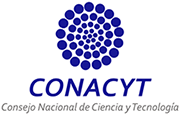IRREPRESSIBLE ARCHITECTURE AND UNSPEAKABLE SPACE. THE ONTOLOGICAL DIMENSION OF LECOBUSIER´S SPACE.
DOI:
https://doi.org/10.20983/decumanus.2016.1.5Keywords:
space-time, philosophy of living, Le Corbusier, modern architecture, projectAbstract
This article is the result of a long-term research that allowed me in my role as architect turn myself about my discipline with other eyes, those of philosophy in a process of posgradual training, directing my thesis to study the humanistic bet that resides, such surreptitious for someone, in time of the Lecorbusian architectural modernity. The research in its entirety dealt with the theoretical construct, from this perspective, that would determine its vertiginous rise and why not also his exhaustion. A century of this discursive exposition is still legitimate to talk about it, not for claiming what by definition could be depleted, but to give their deserved place to one of the aspects more transcendent and less discussed around which it revolved with particular relevance tells by modernity and will have a profound sense now: the space. Although it is interesting that the manifesto Vers une Architecture of LeCorbusier who has guided hundreds of investigations and in particular ours, there is any chapter or section especially dedicated exclusively to the topic, the concern by the same emerges leaving glimpse of the different postures that on the same would develop our author; reflection that, in fact goes back to his early years as painter and is acute in the following years in his life as an architect of war and post-war until crystallize one of his sharpest disquisitions which would call the ineffable space, text that paradoxically wouldn’t be remembered like his other apodictic text. Therefore, the thread that weaves the following pages expected to reveal how the ontological reflection by the space is the underlying inherent bet to modern architecture in his quest to transcend the tradition to become a civilization project, then, to give body to the theoretical dimension of space, was the further function of a so-called practice to provide a wide range of possibilities in relation to the search for another way of living.Downloads
References
Aicher, O. (1994). El mundo como proyecto. México D.F.: Gustavo Gili.
________. (2001). Analógico y Digital. Barcelona: Gustavo Gili.
Argan, G. (1982). El concepto del espacio arquitectónico: desde el barroco hasta nuestros días. Buenos Aires: Nueva Visión.
Banham, R. (1985). Teoría y diseño en la primera era de la mágquina. Barcelona: Paidós.
Bollnow, F. (1969). Hombre y espacio. Barcelon: LAbor.
Collins, P. (1998). Changing Ideals in Modern Architecture (2ª ed.). Canadá: Mc Gill University Press.
Compagnon, A. (1993). Las cinco paradojas de la modernidad. Caracas: Monte Ávila Editores.
Einstein, A. (2000). Mis ideas y opiniones. Madrid: Antoni Bosch.
Fleming, W. (1989). Arte, música e ideas. México D.F.: McGraw Hill.
Frampton, K. (1987). Historia crítica de la arquitectura moderna. Barcelona: Gustavo Gili.
Giedion, S. (1986). El presente eterno. Los comienzos de la arquitectura. Madrid: Alianza.
Heidegger, M. (1994). Construir, habitar, pensar. En M. Heidegger, Conferencias y artículos. Barcelona: Serbal.
Huse, N. (1986). Le Corbusier. Barcelona: Salvat.
Jeckns, C. (1980). Lenguaje de la arquitectura posmoderna. Barcelona: Gustavo Gili.
Kruft, H.-W. (1994). A History of Architectural Theory from Vitrivius to the Present. New York: Princeton Architectural Press.
Le Corbusier. (1930 [1998]). Hacia una arquitectura. Barcelon: Poseidón.
__________. (1946[1998]). El espacio inefable. DC. Revista de cr´ticia arquitectónica (1), 46-55.
__________. (1961). El Modulor. Ensayo sobre una medida armónica a la escala humana aplicable universalmente a la arquitectura y a la mecánica. Buenos Aires: Poseidón.
Lyotard, J. (1984). La Condición Postmoderna. Madrid: Cátedra.
Downloads
Published
How to Cite
Issue
Section
License
Copyright (c) 2016 DECUMANUS

This work is licensed under a Creative Commons Attribution-NonCommercial-ShareAlike 4.0 International License.











